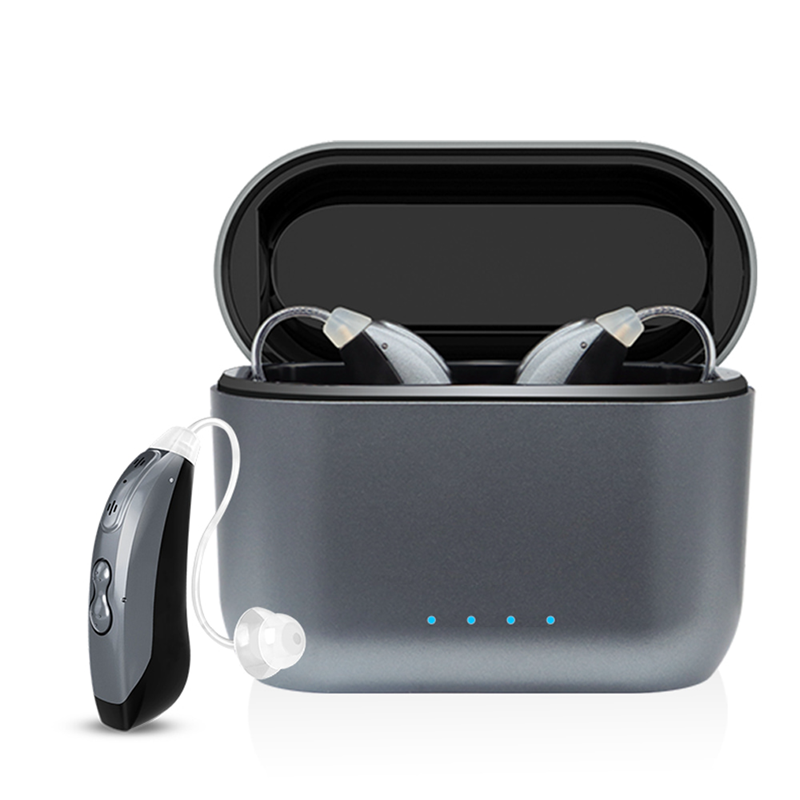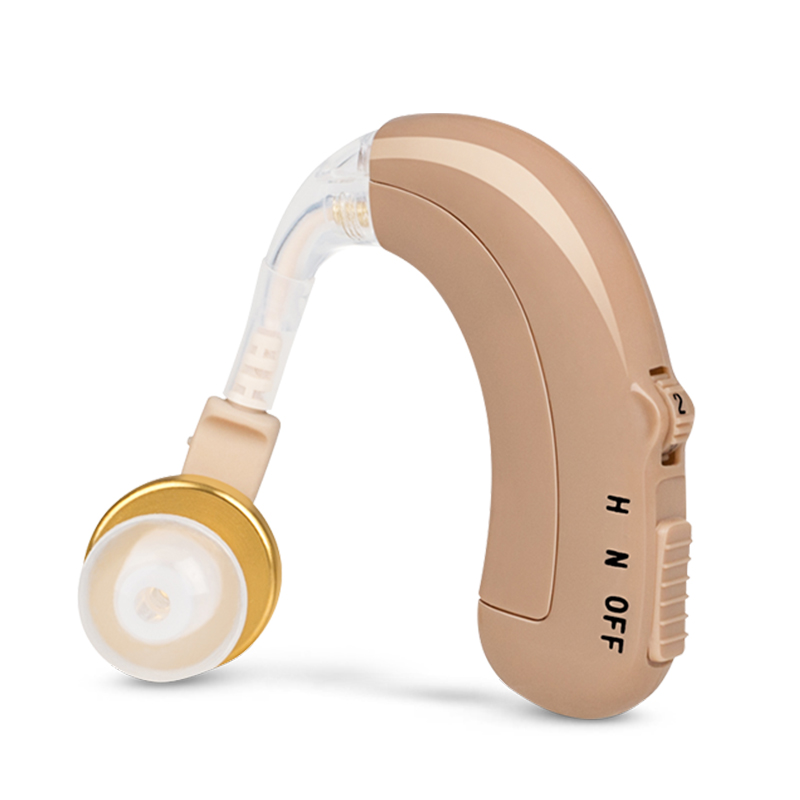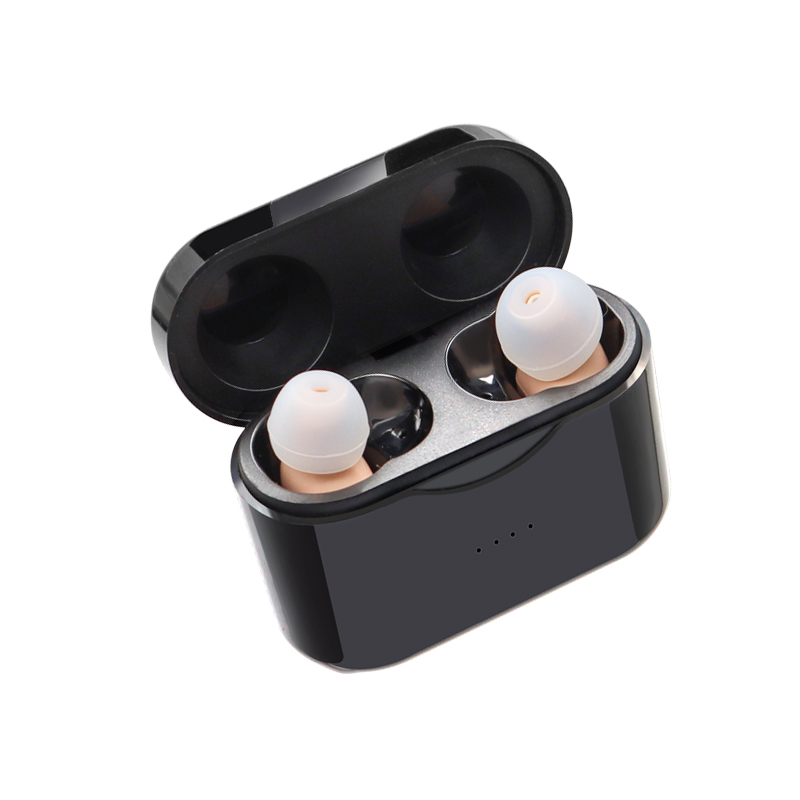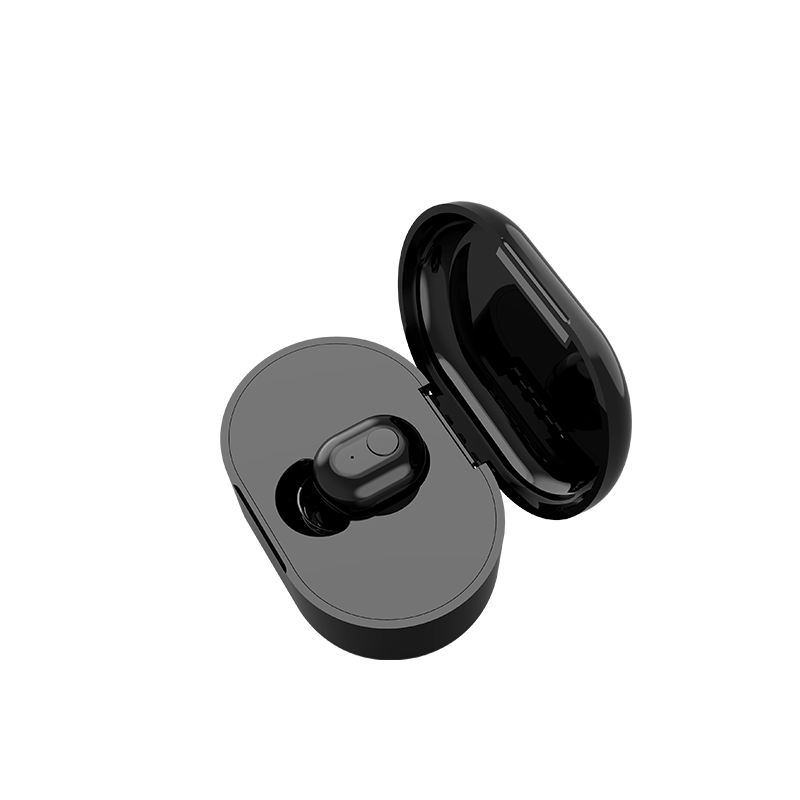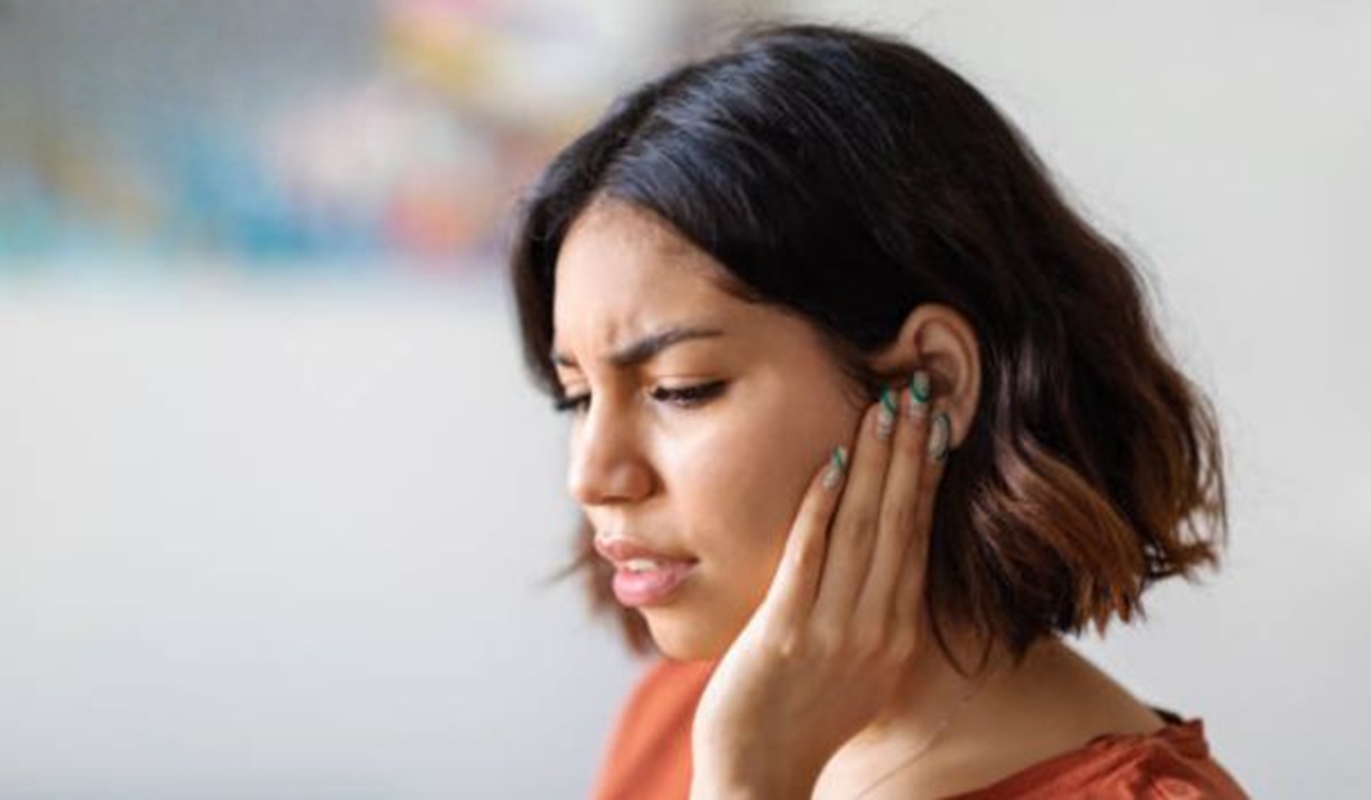Key points:
-
A decibel (dB) is a unit of measurement for sound levels, also known as amplitude or volume.
-
It is measured on a logarithmic scale, increasing exponentially. Every increase of 10 dB on the decibel scale is equal to a 10-fold increase in sound pressure level.
-
Hearing loss is measured, in part, by the lowest level of decibels you are capable of hearing.
-
Severe hearing loss, for example, means you can't hear sounds below about 70 dB.
The soft whisper of a grandchild sharing a secret, the loud blare of a fire truck's siren as it enters the intersection, the soothing melody of your favorite song on the radio. How do we measure the intensity of the sounds they make? Behold the humble decibel, a logarithmic way of describing a ratio between things like power, sound pressure and voltage.
Decibels measure sound intensity (amplitude)
Sound is energy that travels in waves. It can be measured in two ways: frequency and amplitude.
- Frequency, reported in Hertz (Hz), measures the number of sound vibrations in one second. In daily life, this corresponds to how low- or high-pitched something is. A child's voice is high frequency, for example. Health-wise, many older adults develop what's known as high-frequency hearing loss, making it harder to hear sounds that are higher pitched.
- Amplitude, reported on the decibel (dB) scale, measures sound's pressure or forcefulness. The more amplitude a sound has, the louder it is. In daily life, we often think of this as volume.
Decibels increase exponentially
'A 10 db increase means 10 times louder, a 20 db increase means 100 times louder'
Decibels are measured logarithmically. This is a way of counting or measuring something that increases rapidly, or exponentially. For example, every increase of 10 dB on the decibel scale is equal to a 10-fold increase in sound pressure level (SPL). Near silence is expressed as 0 dB but a sound measured at 10 dB is actually 10 times louder. If a sound is 20 dB, that's 100 times louder than near silence.
This is important to understand, as it helps you understand just how loud something really is when looking at dB charts.
Decibel levels of common sounds
On its own, though, being told that something measures "85 dB" isn't particularly useful if you aren't a hearing professional. We've put together this chart to show you roughly how common noises measure on the decibel scale.
As you can see, firearms are significantly louder than heavy city traffic—an increase from 85 to 150 dB is exponentially much louder. That's why firearms are known to be considerably harmful to hearing, and why hearing protection is a must to avoid developing shooter's ear.
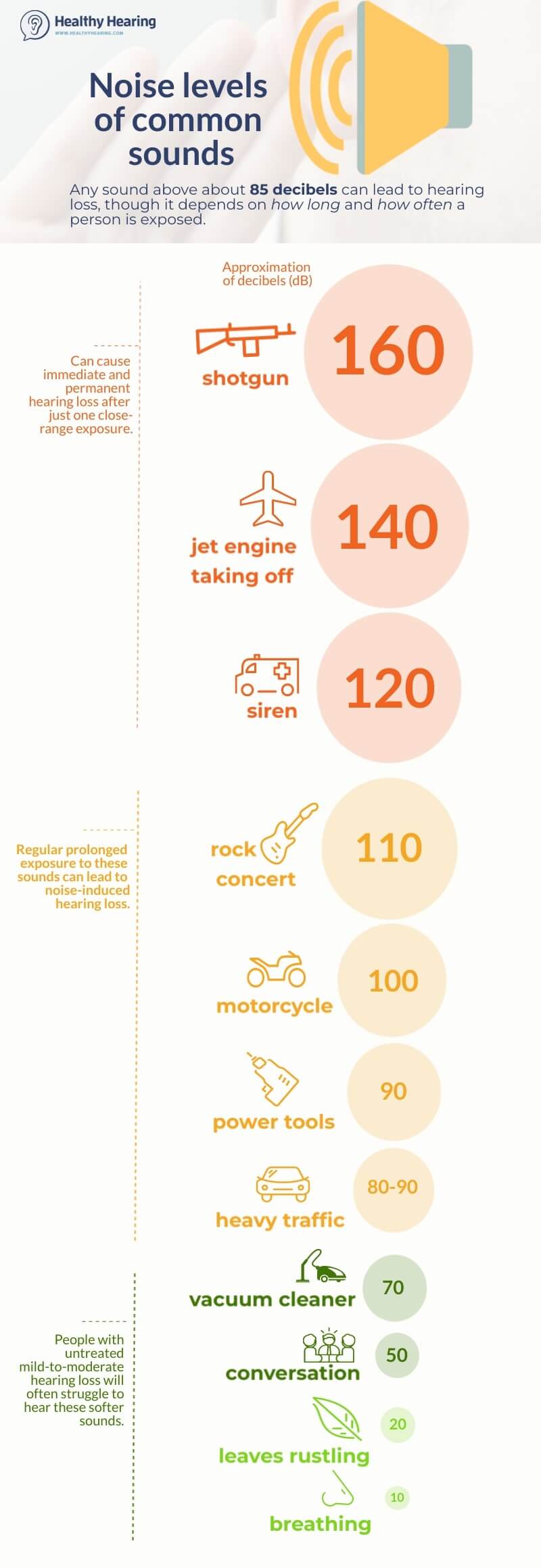
- Normal conversation – 60 dB
- Heavy city traffic – 85 dB
- Lawn mower – 90 dB
- Audio headset player at maximum volume – 105 dB
- Sirens – 120 dB
- Concerts – 120 dB
- Sporting events – 105 to 130 dB (depending upon the stadium)
- Fireworks – 140 to 160 dB
- Firearms – 150 dB and higher
Measuring hearing loss in decibels: How does it work?
Hearing loss is measured, in part, by the lowest level of decibels you are capable of hearing. For example, a person with normal hearing can hear rustling leaves and water dripping (~10 dB), but a person with mild hearing loss could not. The other factor is frequency, or pitch. Some people lose their hearing ability in higher frequencies, and some in the lower frequencies. There are many possible combinations of decibel and frequency loss, all of which can be plotted on an audiogram showing a person's degree of hearing loss, which range from mild to profound:
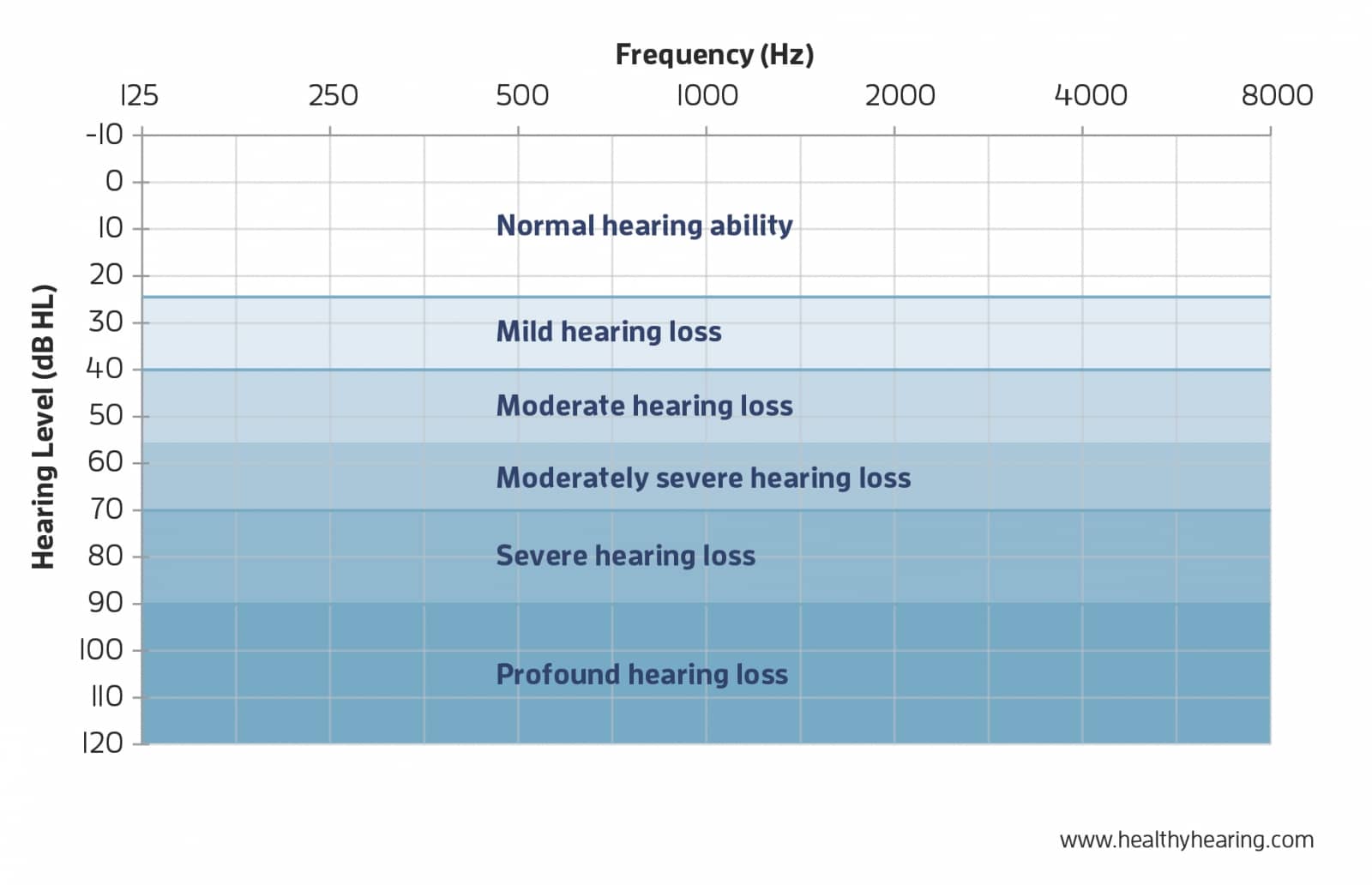
would struggle to hear sounds quieter than about 50 dB.
More: How we hear: A step-by-step explanation
Decibels and noise-induced hearing loss
Decibels might be just another measuring stick if it weren’t for the damaging effects loud noise inflicts on our hearing. Whether it’s a one-time exposure to a loud explosion or daily exposure to an excessively noisy workplace or hobby, our hearing suffers the consequences. This type of hearing loss is known as noise-induced hearing loss (NIHL).
The National Institute on Deafness and Other Communication Disorders (NIDCD) estimates approximately 15 percent of Americans between the ages of 20 and 69 have hearing loss that may have been caused by exposure to loud noise at work or through leisure activities.
How loud is too loud?
If you're in a noisy place and worried it may lead to hearing loss, there are two quick ways to measure the situation: One, use a smartwatch or smartphone sound meter app. Or, two, follow this general 4-step rule of thumb for knowing when loud is too loud:

People with hearing loss still need to be careful
Those who wear hearing aids should be mindful of dB levels in their environment, too. Hearing aids and other devices amplify sounds in the environment, so your remaining hearing is susceptible to noise-induced hearing loss just like everyone else’s. You risk losing your remaining residual hearing when around loud sounds.
While it might be tempting to turn your devices off thinking that they will serve as protection, guess again. Most don’t fit snugly enough in the ear canal to block harmful sound and, when they are turned off, can prevent you from hearing desirable sounds — such as emergency vehicles, concert music, or the sporting announcer.
Your best bet is to work with a hearing healthcare professional to identify the appropriate hearing protection for the type of activity you’ll be participating in or attending. Wearing the proper hearing protection will allow you to wear your hearing devices safely and still hear activity around you.
The above is the interpretation of What is a Decibel? A Simple Guide to Sound Measurement provided by Chinese hearing aid supplier Shenrui Medical. Link https://www.srmcm.com/Blog/What_is_a_Decibel_A_Simple_Guide_to_Sound_Measurement.html of this article is welcome to share and forward. For more hearing aid related information, please visit Blog or take a look at our Hearing aids products


